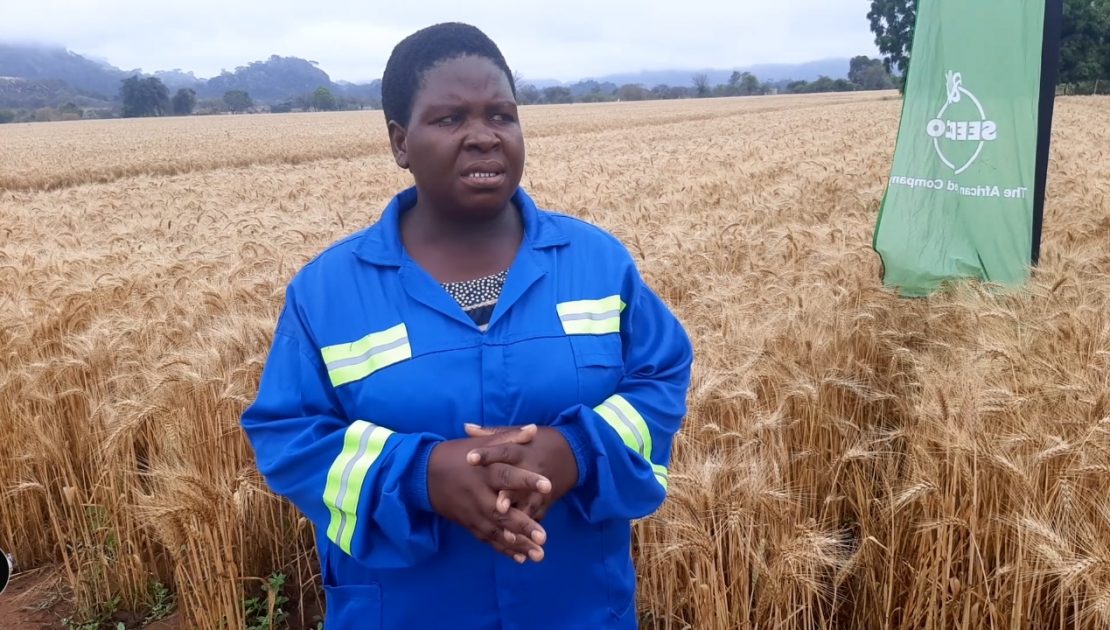Female extension officers – supporting the production of good food for all
Female extension officers – supporting the production of good food for all
-
18th October 2022
- Posted by: Precious Nkomo

Behind every successful irrigation scheme is a hardworking extension officer, partnering with farmers to produce a successful crop and a viable scheme. Mayorca and Banga are no exception. The two are now regarded as model schemes and behind them are two female extension officers. As we commemorate International Rural Women’s Day 2022, under the theme “ Rural women producing good food for all”, we track the experiences of two AEOs and the work they have done with farmers. We celebrate their hardwork, commitment and resilience.
Innerty Chisi
Innerty Chisi is an Agricultural Extension officer (AEO) at the 62 hectare recently rehabilitated Banga Irrigation Scheme with 285 farmers. Working closely with farmers at Banga, Chisi has managed to create one of the model schemes under the Smallholder Irrigation Revitalisation. The scheme, which recently hosted a seed fair graced by the Minister of State for Provincial Affairs and Devolution, Hon. Ezra Chadzamira, farmers from other schemes, other extension officers and government officials adopted the block irrigation model and has become a centre of excellence, offering lessons learnt which are being adopted by other schemes.
The 39 year old Innerty joined the Ministry of Lands, Agriculture, Fisheries,Water and Rural Rural Development in 2007 and was deployed to Banga Irrigation Scheme in 2016. She said the key to her working with farmers in one of the most successful schemes is being simple and down to earth, a situation where farmers view her as one of them and not superior. To other extension officers, Chisi advises that they must ensure that there is farmer involvement in decision making, coupled with farmer trainings and demonstrations to encourage farmers to adopt new technologies.
Sharing some nuggets of wisdom on the block irrigation farming, Chisi said, “ To achieve the block system, we held a meeting with the farmers and divided the scheme into three blocks after which farmers picked out cards which have numbers from a hat. The plot number picked by a farmer became his/her plot. Farmers repeated the process for the remaining plots. Each farmer has 0.1 hectares per plot giving them a total of 0.3 hectares in the whole scheme.
We then held another meeting with farmers to plan for the crop cycles, which forms part of planning ahead. After reaching a decision we started making arrangements for the purchase of inputs such as seeds, fertilisers and chemicals. Farmers then contributed money to buy the inputs. The amount contributed by each farmer depended on the total cost of agreed inputs. We then reach out to seed houses that supply us with seeds. However for this wheat crop that is in the field, we received inputs from the Presidential Inputs Programme which included seeds, fertilisers and chemicals. After receiving the seed, we shared it among all farmers with each farmer getting 14kgs of seed., 40kgs of compound D and 50 kgs of ammonium nitrate (top dressing).
We then made an agreement on how planting would take place. When planting started we agreed that no farmer would lag behind. Any farmer that lags behind is fined by the scheme. The farmers are now conscious of the importance of block irrigation hence there were no farmers that lag behind.
As the scheme AEO I have a demonstration plot where I demonstrate best practises for farmers for the targeted crop. Farmers observe how I do it then they replicate the process in their field. The demo plot is not for the AEO alone but farmers also contribute their knowledge and suggestions. Being an AEO does not mean you know everything but you also learn from the farmers as well.
Before application of fertilisers, we held another meeting where we agreed on how the process would be done. For top dressing we applied an initial 25kgs after 21 days (split application) and then another 25 kgs two weeks later. We did not use any pesticides or herbicides because these had previously been applied during other crop cycles therefore we did not encounter any challenges. The same process has been replicated on the 20 hectare plot of green mealies.”
